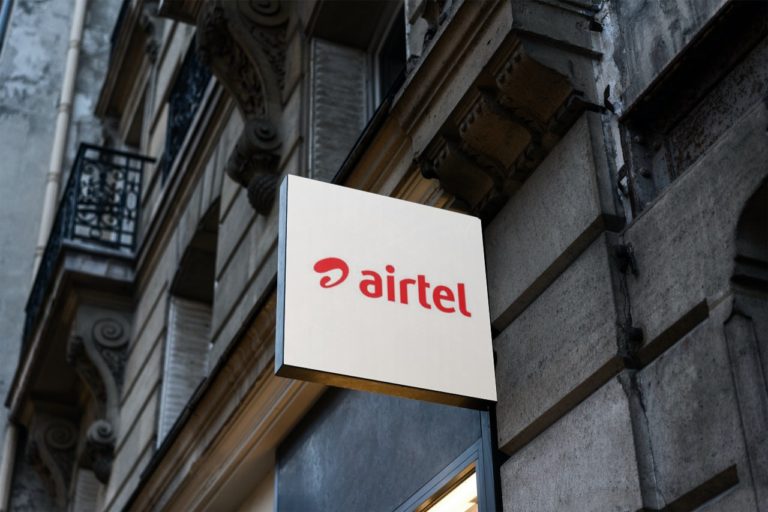Automate or Stagnate: Why Marketing Automation is Now the Core of Performance Strategy

The performance marketers in Nigeria’s digital economy are facing several challenges like operating with tight budgets, spreading unified brand messages to fragmented audiences, and being under significant pressure to deliver measurable ROI on their marketing campaigns.
As digital marketing channels multiply and customer journeys become more complex, it has become almost impossible to manually optimize performance marketing campaigns at scale. With this new dynamic, automation has now shifted from a convenience to a necessity in the performance marketing toolkit.
In the past year, automation tools like smart bidding algorithms and CRM-integrated chatbots have transformed how campaigns are executed, and how companies think about marketing as a growth engine. At many companies including one that offers an in-store music streaming service, my team and I have observed how automation cuts inefficiencies, increases customer satisfaction, and reduces acquisition costs. Therefore, it is important to highlight how automation is reshaping performance marketing in Nigeria and why mastering these systems is essential for every marketer who wants to remain competitive.
What is Marketing Automation in Practice?
Marketing automation is the use of software and systems to manage repetitive tasks, personalise communication, and optimise decisions at scale. It spans various marketing touchpoints such as audience targeting, content delivery, lead nurturing, performance tracking, and even creative generation.
Performance marketers and entrepreneurs are adopting tools like Meta Advantage+, Google Ads Smart Bidding, HubSpot, Mailchimp, and custom WhatsApp bots has accelerated. These tools reduce human error, accelerate decision-making, and allow marketing teams to operate at scale in ways they cannot match on their own.
At the in-store music streaming service, we integrated Zapier and Integromat (now called Make.com) with our CRM and paid media platforms. This allowed us to build flows where:
- New leads from Facebook ads were instantly added to segmented email workflows.
- High-intent users triggered SMS reminders after 48 hours of inactivity.
- Drop-offs from landing pages were retargeted in Google Display within minutes.
This kind of automation not just saves time; it ensures that no opportunity is lost in the cracks of a manual system.
Customer Satisfaction: Automation as a Trust Enabler
Contrary to concerns that automation makes marketing feel robotic, our experience showed that it actually enhanced customer experience when implemented properly. For example, automating follow-up messages via WhatsApp with polite, well-crafted responses allowed us to maintain communication continuity with thousands of users without long delays.
At Vbank, chatbots responded to basic banking queries around the clock, which significantly improved customer satisfaction. For more complex requests, the system escalated to human customer support staff so customers could receive more nuanced responses to their unique queries. Automation helped filter the noise, so human customer support staff could focus on high-value interactions.
Personalisation also played a key role. Using behavioural data, we triggered tailored product suggestions and educational content based on user interests. A user who downloaded a budgeting template received saving tips three days later, followed by an invitation to try the service’s savings tools. Open and click-through rates increased by over 45% in these sequences.
Automation gives users the right message at the right time, something manual campaigns often fail to do, especially at scale.
Budget Optimisation Through Smart Bidding
Another area where automation has proven invaluable is in budget management. Platforms like Google Ads and Meta have invested heavily in smart bidding strategies that use machine learning to optimise bids in real time.
We tested Google’s Target CPA and Target ROAS bidding across different types of marketing campaigns and the results were consistent. Campaigns using automated bidding had 19% lower cost-per-acquisition (CPA) and 26% higher conversion rates compared to manual bids. Similarly, Meta Advantage+ campaigns allowed broader audience testing while still optimising for performance goals, helping us reduce audience fatigue.
Beyond the numbers, automation helped us to save the time we would have spent manually tweaking campaigns. We instead used that time for strategic thinking about important marketing concepts such as creative direction and funnel restructuring. We also experimented with new channels to find new ways to market to consumers.
Automation is not about replacing marketers, rather it is a tool that increases efficiency, boosts productivity, and empowers them to focus on high-quality work instead of repetitive tasks.
Automating Lead Nurturing and Sales Enablement
Performance does not end with a click. In the Nigerian digital environment, especially in fintech and B2B sectors, lead nurturing is critical, and automation has made it easier.
We built email sequences based on behavioural scoring. Leads that watched a demo video but did not sign up were sent testimonial emails. Those who visited pricing pages got discount offers. Workflows were triggered by user action, not guesswork.
In one campaign for a tech education client, we saw a 38% increase in application completions when we automated reminders, deadline alerts, and FAQs via email and SMS. Sales teams were also automatically notified when leads crossed certain engagement thresholds, enabling faster and better-informed follow-ups.
This integration of marketing automation with sales workflows cut down lead leakage and shortened sales cycles, which increased revenue.
From Campaign to Lifecycle: Retention Automation
Performance marketing is often judged by its immediate return-on-investment, but this is wrong. This focus should be long-term business growth and this requires customer retention, and automation helps with this by maintaining engagement with customers even after conversion.
We did this by setting up post-conversion sequences that included:
- Onboarding emails highlighting product features.
- Birthday and anniversary messages with exclusive offers.
- Re-engagement campaigns for inactive users.
This lifecycle marketing approach helped increase customer lifetime value (CLV) by 15%. Also, we were able to test and refine these workflows with minimal manual intervention.
Tools like Customer.io and Klaviyo provided real-time analytics on message open rates, click-through rates, and churn indicators. Automated reactivation campaigns were then deployed to high-risk users.
Retention is often overlooked in Nigerian performance marketing, and most companies and marketers focus mostly on acquisition. If they embrace automation, they will be able to drive value across the entire customer journey.
The Human + Machine Balance
It is worth noting that automation is only as effective as the strategy behind it. Tools cannot fix poor creative or irrelevant messaging. The role of the marketer is evolving to automate workflows and synchronize them with their existing marketing processes to boost productivity, not automate for the sake of automating.
We found success in balancing automation with intuition. For instance, while subject lines were A/B tested via AI tools, final copy decisions still involved creative judgment. Similarly, customer journey mapping was automated based on behaviour, but human insights helped interpret the reasons behind the data.
This balance is critical. Over-automating without context can lead to tone-deaf communication or missed opportunities for creating a genuine connection between business and consumer.
Why Every Performance Marketer Must Learn Automation Now
As marketing evolves, so must the skillsets of practitioners. Automation is no longer a specialist domain reserved for data engineers or CRM managers. It has become the foundation of modern performance strategy.
Marketers who cannot configure lead scoring systems, understand API triggers, or design automated journeys are quickly becoming obsolete. In fact, many digital marketing job postings now list automation experience, such as Zapier, Make, HubSpot, Salesforce, Customer.io, as core requirements.
This does not mean everyone will write code as a part of their job, it means that performance marketers must:
- Understand data flow and user segmentation logic.
- Design customer journeys based on triggers.
- Collaborate with developers to integrate tools and platforms.
- Test, refine, and interpret automation analytics.
The Road Ahead: AI and Predictive Automation
Looking forward, automation is evolving from reactive systems to predictive engines. AI-powered tools can now forecast user churn, suggest content types, and generate creative assets.
We are experimenting with tools like Jasper for automated copy suggestions, and ChatGPT plugins that draft ad sets based on prior performance. Predictive churn models are helping inform retention efforts before users disengage. These are not just gimmicks, they significantly increase productivity and revenue.
Voice-based assistants, conversational commerce, and sentiment-driven responses are the next wave. It is worth noting that automation tools are becoming smarter and more human-like by the day, and marketers must stay ahead of this curve.
Conclusion
Marketing automation is not the future, it is already here. In Nigeria’s competitive digital economy, where speed, scale, and customer satisfaction are crucial, automation is a competitive advantage that every performance marketer should leverage.
It can be used in marketing campaign setup, bidding, lead nurturing and customer retention to save time and increase the chances of success. Furthermore, it enables marketers to do what they do best, which is to think strategically, tell compelling brand stories, and build human connection with a consumer base.
Learning automation is no longer optional for performance, it is essential for business success and career growth. To remain relevant in the near future, performance marketers must acknowledge the role of automation tools, learn how to use them, embrace lifelong learning, and partner with the machines that are shaping the future of marketing.
Because in this new era, you either automate or stagnate.
Written by Chisom Okpala







